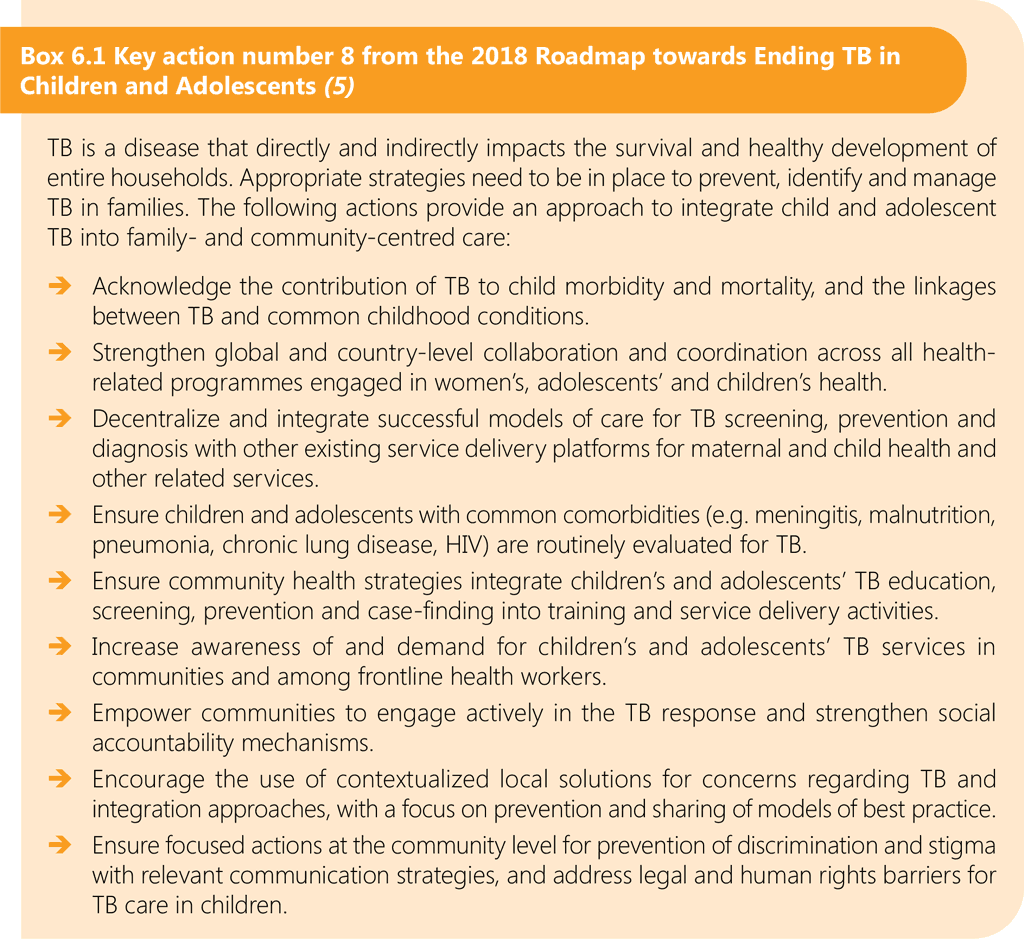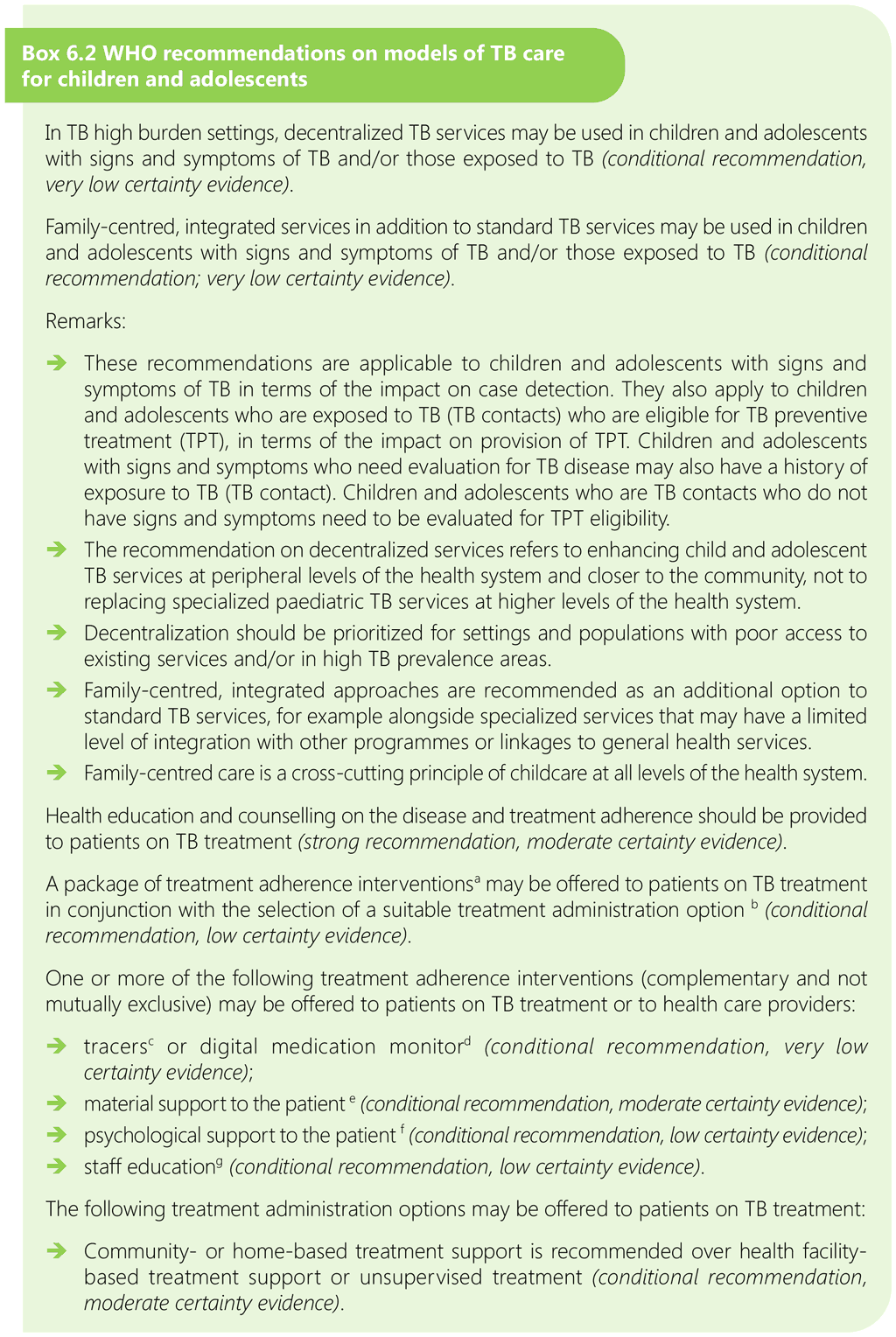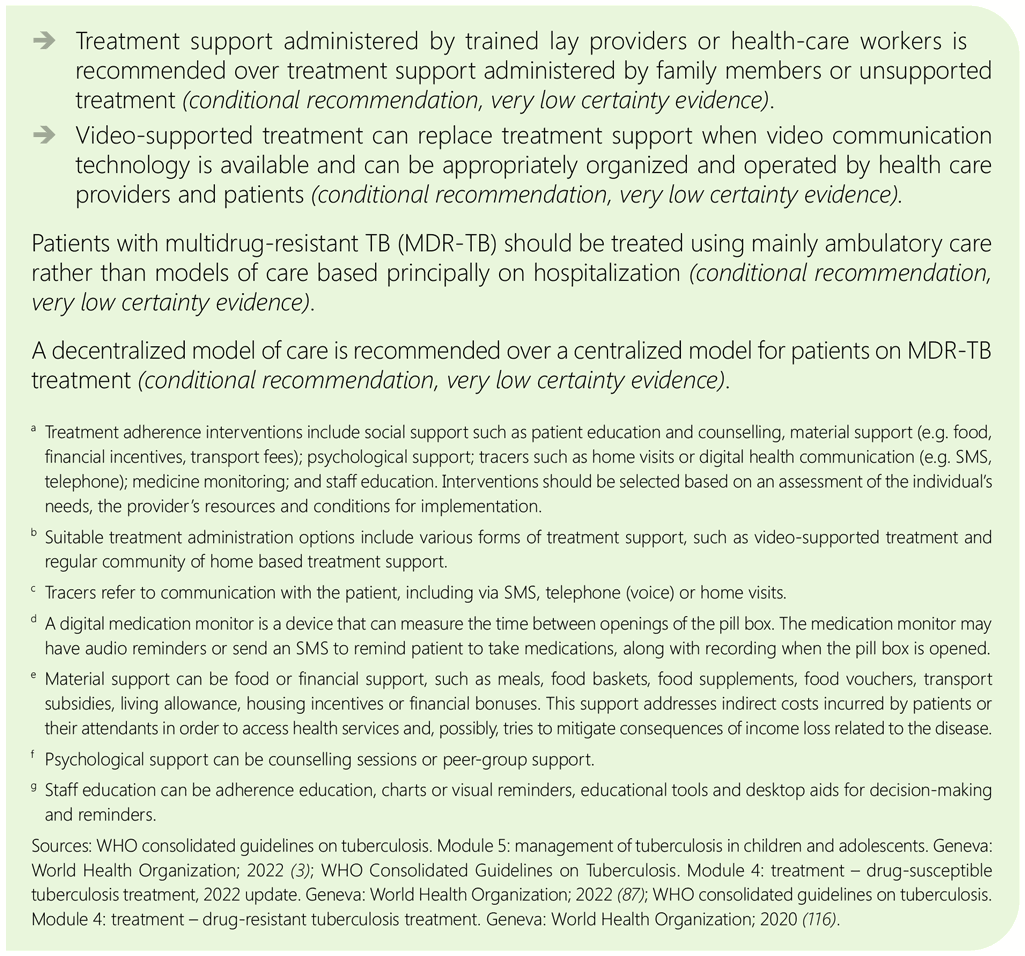Book traversal links for 6.1 Introduction
In high TB burden countries, the capacity to manage TB in children and adolescents is often centralized at the tertiary or secondary level of health care rather than being decentralized at the PHC level where children and adolescents with TB or TB exposure commonly seek care (5, 157). Care at higher levels in the health system is often managed in a vertical, non-integrated way. Children and adolescents with TB may go undetected because of missed opportunities for contact investigation, TB prevention, detection and care, and as a result of weak integration of child and adolescent TB services with other programmes and services, especially IMCI, malnutrition and HIV services.
If not addressed, such access challenges contribute to preventable delays in diagnosis and treatment, which may lead to increased disease severity, suffering and mortality. An important step towards improving access to TB prevention and management of TB in children and adolescents is the provision of decentralized, family-centred integrated care (5).
Integrated, patient-centred care and prevention is a key pillar of the WHO End TB Strategy and aims to ensure all people with TB have access to affordable high-quality services according to their needs and preferences (7). This is further underpinned in the 2018 WHO roadmap towards ending TB in children and adolescents (5), which calls for the implementation of integrated family- and community centred strategies (Box 6.1).

This chapter focuses on models of care to increase access to children’s and adolescents’ TB services. WHO recommendations related to models of care for TB services for children and adolescents are presented in Box 6.2. These approaches aim to bring TB services closer to where children, adolescents and families live. As the recommendations are new, evidence on the best ways to implement these recommendations is emerging, and national programmes are encouraged to document examples of best practice in this area.
This chapter also discusses engagement of the private sector, DSD models, and mitigation measures in the context of health emergencies such as the COVID-19 pandemic. Decentralization and family-centred integrated care are included in the list of definitions.


 Feedback
Feedback